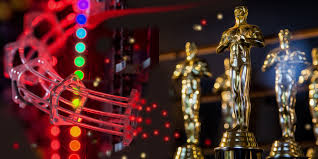On February 24, 2019, the 91st Academy Awards took place, making history yet again. While monumental movies such as Alfonso Cuarón’s Roma and Marvel’s Black Panther came out on top, one of the most controversial decisions of the night occurred at the announcement of the “Best Picture” category: Peter Farrelly’s The Green Book took the beloved prize.
The Green Book is a road-trip movie depicting a rough-around-the-edges bouncer, played by Viggo Mortensen, who chauffeurs a finicky yet intelligent African American pianist, played by Mahershala Ali, throughout the segregated South in the 1960s. Receiving mediocre critical attention, questions have been asked about the legitimacy of this Oscar win: is The Green Book the narrative about racial tension that we need, or is it simply the safe choice?
The film competed against other movies in the “Best Picture” category such as Black Panther, Spike Lee’s BlacKkKlansman, and Roma, showing a variety of choices that either embodies racial progression or portrays issues of racial tension. Particularly amongst the black community, Black Panther embodied the idea that movies with an all-black cast are capable of success internationally, accumulating over $1.3 billion and making history.
BlacKkKlansman depicts the disturbing imagery of lynchings and violent riots, Lee expressing the harsh reality of racism in the United States in the 1970s that continues today. In contradiction with Farrelly’s The Green Book, BlacKkKlansman embodies the horrors of racism whereas The Green Book depicts a safer and hopeful understanding of racial reconciliation.
Is the picture of hope found in The Green Book what is needed to bring awareness of continued racism throughout the United States to incite action? Hope is necessary, yet in order to feel hopeful, we must first understand our own despair as well as the despair of others. The Green Book does a great job of embodying the need for empathy and love– when we are surrounded by people that are different from us and understand them as human, we are changed.
Yet, the narrative of empathy and love has been invoked for decades; many critics have likened Farrelly’s film to the 1990 classic Driving Miss Daisy where an elderly white woman connects with her black driver. Empathy and love are important components in striving for racial reconciliation, yet Lee’s film depicts something more modern and possibly more critical: messages of empathy and love haven’t changed society, and they won’t change society.
By drawing similarities between the story of Ron Stallworth, the protagonist of BlacKkKlansman, to the Charlottesville riots that occurred in 2017, Lee seems to be attempting to address racism through depicting the horrors of it rather than the hope of overcoming it. This understanding of the racism that continues to occur is important for audiences to understand- while empathy and love can change the way people think, guilt and shame motivate people to change both their beliefs and actions.
I would argue that both movies are necessary: in order to have hope and incite action, we must first see the horrors of our world to find ways to reconcile the tension. While The Green Book is deeply flawed in its pacified message of empathy and love, BlacKkKlansman also fails to recognize the tension between the good and bad in human beings- the film seems to connote that KKK members are all bad and everybody who supports Stallworth is good. Without recognizing the nuanced nature of humanity, Lee failed to do what Farrelly’s film did: unify. Lee offers a problem without a solution, and Farrelly offers a solution to an oversimplified problem.
Overall, The Green Book was undoubtedly a “safe” choice for the Academy to choose as the Best Picture, bringing to light society’s struggle to recognize the importance of understanding the horrors of racism while also maintaining the idea of solution-based hope. Recognizing other movies with minority casts that are not about discrimination (e.g. Sorry to Bother You, the Creed franchise, or Black Panther) could be a revolutionary change that redefines the ways in which society views films as a whole.
(Photo courtesy of Google Images)
